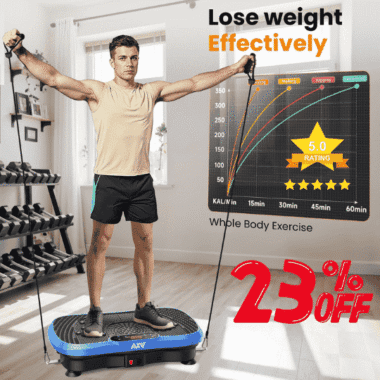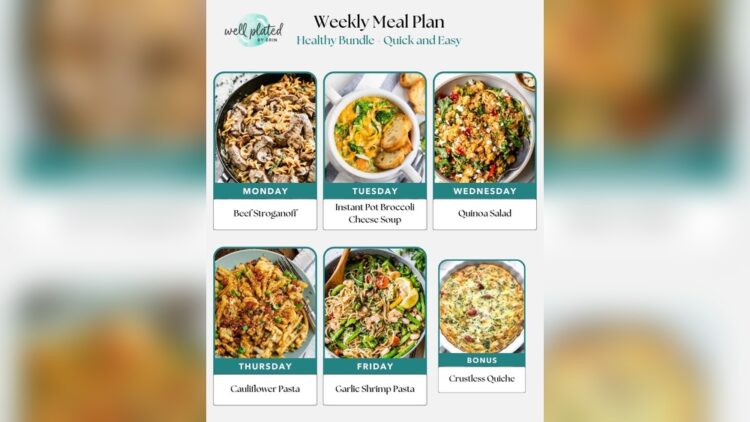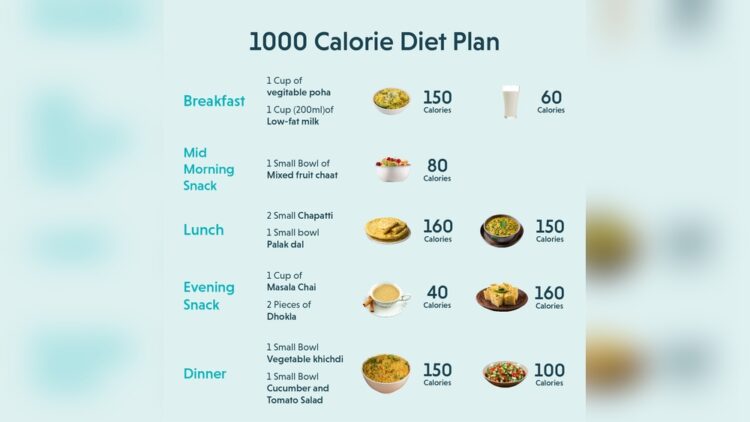Walking is an effective method for weight loss, providing numerous benefits for those aiming to shed pounds. Walking is a simple yet effective way to kick-start your weight loss journey.
Not only is it accessible to people of all fitness levels, but it also requires no equipment or expensive gym membership. By incorporating regular walks into your daily routine, you can burn calories, boost metabolism, and improve cardiovascular health. Moreover, walking engages various muscle groups, helping to tone your body and increase overall strength.
With its low impact nature, it reduces the risk of injury commonly associated with high-intensity workouts. So, lace up your sneakers, take a step forward, and embark on a journey towards a healthier, slimmer you.
The Benefits Of Walking For Weight Loss
Walking is a highly effective way to lose weight. It boosts metabolism, burns calories, and improves overall fitness levels. Incorporating regular walks into your routine can lead to significant weight loss over time.
Increased Calorie Burn
Walking can be a powerful tool for shedding those unwanted pounds. By engaging in regular brisk walks, you can increase your calorie burn and create a calorie deficit – a key factor in weight loss. When you walk, your body uses up energy, and this, in turn, helps to burn calories. The more intense your walking pace, the more calories you burn. By incorporating hills or various terrains into your walking routine, you can also increase the intensity and further boost your calorie burn.Improved Cardiovascular Health
In addition to promoting weight loss, walking has significant benefits for your cardiovascular health. Regular walking exercises your heart, improving its strength and efficiency. This can reduce the risk of heart disease and stroke. Walking also helps to lower blood pressure and cholesterol levels, further protecting your heart’s health. By improving your cardiovascular fitness, you can increase your endurance and stamina, allowing you to engage in more challenging workouts as you progress on your weight loss journey. Overall, walking is an excellent choice for weight loss, thanks to its ability to increase calorie burn while enhancing cardiovascular health. Whether you are just starting your fitness journey or looking to supplement your existing routine, incorporating regular walks into your schedule can deliver noticeable results over time. So lace up your sneakers, head outside, and take advantage of the fantastic benefits that walking has to offer.Creating An Effective Walking Routine
When it comes to losing weight, walking can be an incredibly effective form of exercise. Not only is it accessible to people of all fitness levels, but it also helps to improve cardiovascular health and burn calories. To maximize your weight loss efforts with walking, it’s important to create an effective walking routine. This involves setting realistic goals, choosing the right walking route, and staying committed to your routine.
Setting Realistic Goals
Setting realistic goals is essential for staying motivated and focused on your weight loss journey. By setting achievable targets, you are more likely to stick to your routine without feeling overwhelmed or discouraged. Start by determining how many days a week you can commit to walking and the duration of each session. Aim for at least 150 minutes of moderate-intensity walking per week, as recommended by health experts. Remember to start with shorter walks and gradually increase the distance and intensity over time.
Choosing The Right Walking Route
Choosing the right walking route can make all the difference in keeping your routine interesting and enjoyable. Look for routes that offer a variety of scenery, such as parks, beaches, or urban trails. Consider the terrain as well, as walking uphill or on uneven surfaces can provide an extra challenge and help increase calorie burn. If you prefer the convenience of walking indoors, consider a local mall or community center with a walking track or treadmill. By diversifying your routes, you’ll stay motivated and engaged in your walking routine.
Ensuring proper nutrition and staying hydrated are also crucial components of any weight loss journey. Remember to fuel your body with a balanced diet consisting of fruits, vegetables, lean proteins, and whole grains. Stay hydrated by drinking plenty of water throughout the day, especially before and after your walks.
| Benefits of Creating an Effective Walking Routine | How to Incorporate It |
|---|---|
| Increased calorie burn | Gradually increase walking duration and intensity |
| Improved cardiovascular health | Include at least 150 minutes of moderate-intensity walking per week |
| Motivation and focus | Set achievable goals and track your progress |
| Variety and enjoyment | Choose different walking routes with diverse scenery |
By creating an effective walking routine, you are taking a proactive step towards achieving your weight loss goals. Remember, consistency is key, so find a routine that works for you and stick to it. Incorporate strength training exercises and other forms of physical activity to enhance your weight loss journey. With dedication and determination, you’ll soon reap the rewards of walking for weight loss.
Nutrition Tips For Weight Loss With Walking
Boost your weight loss journey with these nutrition tips. Walking is a simple and effective way to shed pounds, and with the right diet, you can reach your goals even faster. Incorporate healthy foods, stay hydrated, and practice portion control to maximize your results.
Eating A Balanced Diet
When it comes to weight loss with walking, nutrition plays a crucial role in supporting your goals. Eating a balanced diet is essential to provide your body with the nutrients it needs while still creating a calorie deficit that promotes weight loss.
A balanced diet consists of a variety of nutrient-rich foods that provide essential vitamins, minerals, and macronutrients. Include a range of fruits, vegetables, whole grains, lean proteins, and healthy fats in your daily meals. This ensures that your body receives all the necessary nutrients while reducing the intake of processed and sugary foods.
Hydrating Properly
Proper hydration is often overlooked but is equally important when it comes to weight loss with walking. Staying hydrated helps maintain optimal bodily functions and can aid in curbing unnecessary food cravings.
Make sure to drink plenty of water throughout the day to stay well-hydrated. A general recommendation is to drink at least 8 glasses of water daily. However, your individual water needs may vary based on factors like activity level and climate.
In addition to water, you can also include herbal teas or infused water for added variety and flavor. Avoid sugary beverages like soda or fruit juices as they can contribute to excess calorie intake.
By focusing on eating a balanced diet and hydrating properly, you can enhance your weight loss efforts while walking. These nutrition tips not only support your overall health but also aid in creating a calorie deficit for sustainable weight loss.
| Tips | Action |
|---|---|
| Eat plenty of fruits and vegetables | Increase your daily intake of colorful fruits and vegetables to boost your nutrient intake and fiber consumption. |
| Choose lean proteins | Opt for lean sources of protein like chicken, fish, tofu, or legumes to support muscle recovery and provide satiety. |
| Include whole grains | Replace refined grains with whole grains like brown rice, quinoa, or whole wheat bread for added fiber and nutrients. |
| Consume healthy fats | Incorporate sources of healthy fats such as avocados, nuts, seeds, and olive oil to promote satiety and support essential bodily functions. |
| Avoid processed foods | Reduce your intake of processed and packaged foods, which are often high in calories, unhealthy fats, and added sugars. |
Implementing these simple nutrition tips along with your walking routine can create a healthy and sustainable approach to weight loss. Remember, consistency is key, and making these changes a part of your lifestyle can lead to long-term success.
Incorporating Strength Training With Walking
Incorporate strength training exercises with your walking routine for effective weight loss. Boost your metabolism and build lean muscle mass by combining these two activities. Maximize your fitness goals by adding resistance exercises while enjoying the cardiovascular benefits of walking.
Building Lean Muscle
If you’re looking to maximize your weight loss efforts, incorporating strength training with walking is the way to go. Strength training helps build lean muscle, which not only tones and sculpts your body but also increases your overall metabolism. By adding a few simple exercises to your walking routine, you can take your weight loss journey to the next level.
Boosting Metabolism
One of the key benefits of combining strength training with walking is the ability to boost your metabolism. As we age, our metabolism naturally slows down, making weight loss more challenging. But by incorporating strength exercises into your routine, you can rev up your metabolism and burn more calories throughout the day. This means that even when you’re not actively exercising, your body will be more efficient at burning fat.
Staying Motivated And Overcoming Plateaus
Discover effective strategies to stay motivated and overcome plateaus in your weight loss journey through the power of walking. Boost your fitness routine and achieve your goals with these tips and tricks.
One of the biggest challenges when it comes to weight loss is staying motivated and overcoming plateaus. It can be discouraging when you feel like you’re not making progress or when you hit a plateau and the scale stops moving. However, with the right strategies, you can stay motivated and break through those plateaus to continue your weight loss journey.
Tracking Progress
Tracking your progress is essential to staying motivated and overcoming plateaus. By keeping a record of your walking sessions and logging your weight loss, you can visually see how far you’ve come and track your progress over time.
One way to track your progress is by using a fitness tracker or smartphone app that measures your distance, pace, and calories burned during your walks. This data can help you set goals and see consistent improvement, providing a constant source of motivation.
Another method is to keep a journal where you record how you felt during each walk, any milestones you achieved, and any challenges you faced. By reflecting on your journey, you can uncover patterns and identify what strategies are working for you.
Varying Intensity
Varying the intensity of your walks can help keep your weight loss journey exciting and prevent plateaus. By incorporating intervals of higher intensity, such as power walking or jogging, you can increase the calorie burn and challenge your body in new ways.
For example, try alternating between a brisk walk and a faster pace for 1-2 minutes throughout your walk. This burst of higher intensity can boost your metabolism and help you break through any weight loss plateaus.
In addition to varying the intensity, consider changing up your walking routes. Exploring new trails or neighborhoods can keep your walks interesting and prevent boredom, which can often lead to a lack of motivation.
Remember to listen to your body and gradually increase the intensity of your walks. Pushing yourself too hard can lead to burnout or injury, so it’s important to find a balance that works for you.
In conclusion, staying motivated and overcoming plateaus is a crucial part of your weight loss journey. By tracking your progress and varying the intensity and routes of your walks, you can stay engaged and break through any challenges that come your way. So keep putting one foot in front of the other and stay committed to your goals. You’ve got this!
Frequently Asked Questions On Weight Loss With Walking
How Many Calories Can You Burn By Walking?
Walking can help you burn up to 300-500 calories per hour, depending on your speed and body weight.
Is Walking Enough For Weight Loss?
Yes, walking alone can be an effective form of exercise for weight loss when combined with a balanced diet.
How Often Should You Walk For Weight Loss?
To achieve weight loss, aim for at least 150 minutes of moderate-intensity walking per week, or 30 minutes a day, five days a week.
Conclusion
Walking is a simple yet powerful form of exercise that can contribute significantly to weight loss. By incorporating walking into your daily routine, you can burn calories, strengthen muscles, and improve overall fitness. Walking is accessible, affordable, and suitable for people of all fitness levels.
So lace up your sneakers and start taking those steps towards your weight loss goals today!
{ “@context”: “https://schema.org”, “@type”: “FAQPage”, “mainEntity”: [ { “@type”: “Question”, “name”: “How many calories can you burn by walking?”, “acceptedAnswer”: { “@type”: “Answer”, “text”: “Walking can help you burn up to 300-500 calories per hour, depending on your speed and body weight.” } } , { “@type”: “Question”, “name”: “Is walking enough for weight loss?”, “acceptedAnswer”: { “@type”: “Answer”, “text”: “Yes, walking alone can be an effective form of exercise for weight loss when combined with a balanced diet.” } } , { “@type”: “Question”, “name”: “How often should you walk for weight loss?”, “acceptedAnswer”: { “@type”: “Answer”, “text”: “To achieve weight loss, aim for at least 150 minutes of moderate-intensity walking per week, or 30 minutes a day, five days a week.” } } ] }











Leave a Reply